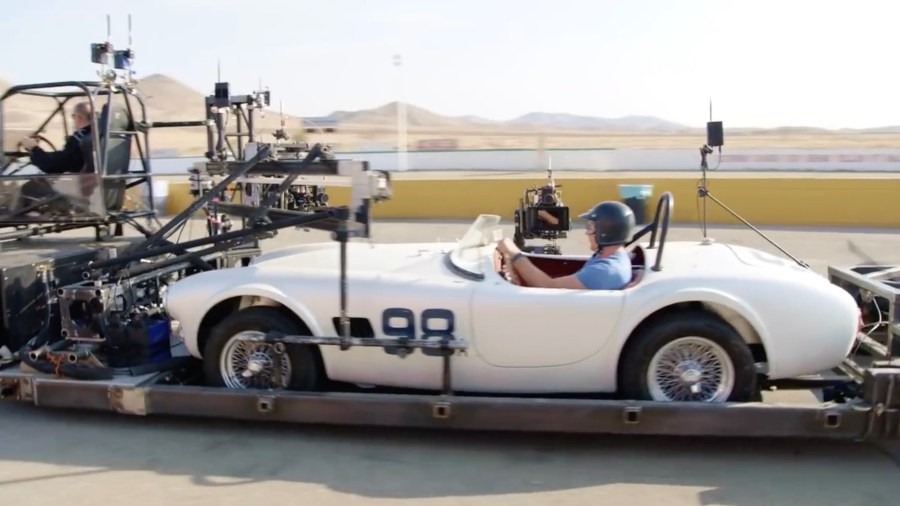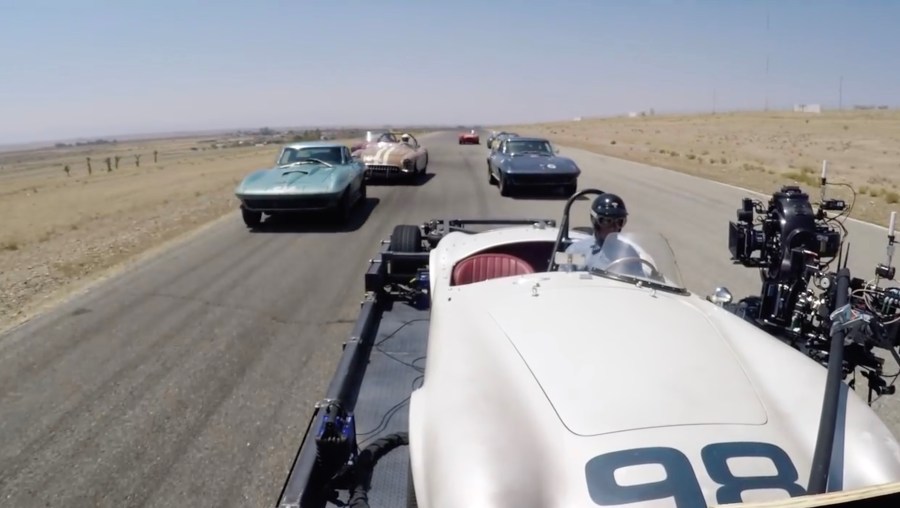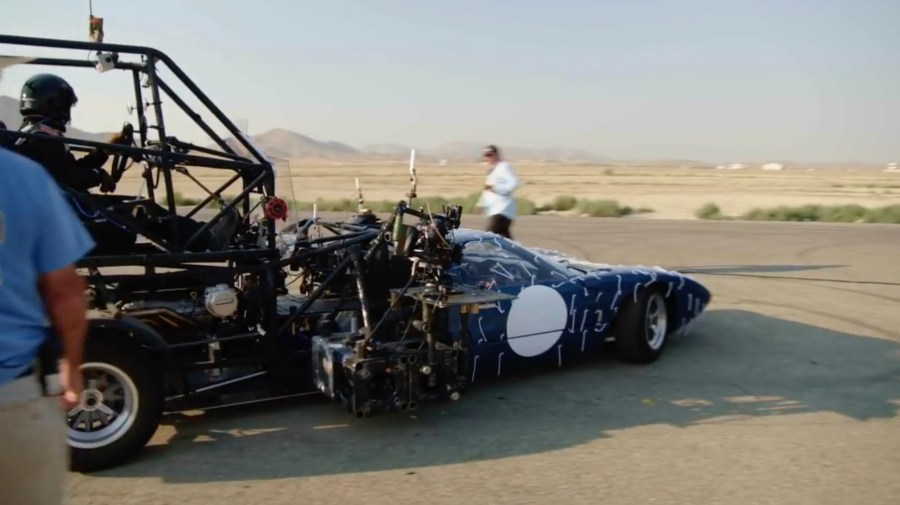
Making Ford v Ferrari: Cinematography at 100 mph
See how director James Mangold relied on tried-and-true methods for shooting scenes at high speed—and invented a few techniques of his own.
Ford v Ferrari sped past the competition at the box office last weekend, taking in $31 million. The mid-budget car drama set in the ’60s spent a decade coming to the big screen, and it was important to director James Mangold to make the racing scenes authentic.
The filmmakers used four different race tracks to recreate the Le Mans track, and they used VFX to smooth over continuity issues like weather and time of day.
One thing they didn’t fake was actors in the drivers’ seats. The crew used a variety of camera cars and other rigs to capture the heat of the race. We’ve already covered the vintage lenses used in the production, but let’s take a deeper look at the high-speed rigging.
Process Trailers
The first tools Mangold and his team used were process trailers. Trucks tow these low-profile trailers bearing “picture cars” with cameras and lights situated around the actor. If you’re just working on a normal driving scene, you can use a standard truck to tow the car at low speeds. Because Ford v Ferrari is a racing film, however, the filmmakers used a specialized truck capable of hauling the trailer at high speeds.
These work best if you’re shooting backward, showing the actor’s face and the track behind them, because the driver of the truck needs an uninhibited view of the track to drive.
The behind-the-scenes for Ford v Ferrari show the filmmakers using a process trailer for both the Shelby Cobra and the Ford GT. The filmmakers used $100,000 replicas, which would have been expensive to damage or drill into, but they were much cheaper than $25 million for an authentic GT40 or Cobra.
Hostess Trays
Hostess trays allow you to rig a camera to a car or process trailer for a side-on view of the driver. It’s a horizontal surface, usually covered in mounting points for a camera or lights, level with the window. Suction caps usually attach the tray at multiple points. Depending on the weight the tray will need to bear and how much movement it will endure, filmmakers sometimes use up to ten, each connected to the tray with a 15mm rod.
Specialty Vehicles
Even with a supercharged truck towing the process trailer, the filmmakers couldn’t get the 100+ mph speeds of real racing (the 1966 GT40 was capable of 210 mph on the straightaways). They also couldn’t record through the windshield.
To solve this problem, they created a novel solution — a half car/half trailer. The GT40 replica housed a modern engine and a control pod on the roof. Not only was it capable of high speeds while carrying up to four cameras, but Christian Bale could sit in the “driver’s seat” and communicate with the director via radio while another operator drove him around the racetrack. The crew dubbed the vehicle the “Frankenstein car.”
One Mile at a Time
James Mangold and his crew recreated a bygone era and created a new kind of racing film by inventing gadgets and shooting practically at every opportunity. They only used CGI to hide wires and make the track seem more authentic. Because sometimes, there is no substitute for real speed.
Cover image via Twentieth Century Fox.
Want more on filmmaking? Check these out.








